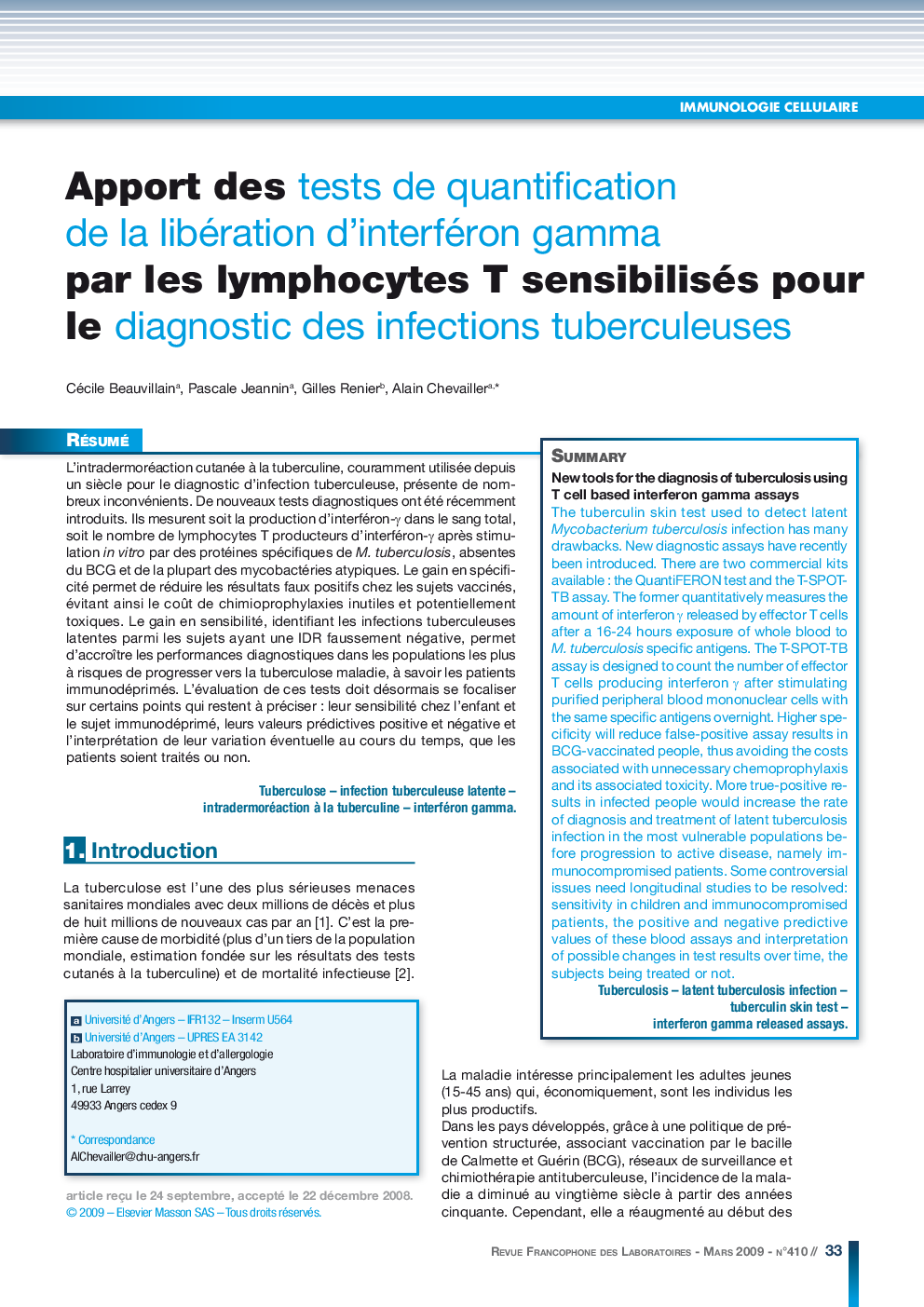| Article ID | Journal | Published Year | Pages | File Type |
|---|---|---|---|---|
| 7660802 | Revue Francophone des Laboratoires | 2009 | 9 Pages |
Abstract
The tuberculin skin test used to detect latent Mycobacterium tuberculosis infection has many drawbacks. New diagnostic assays have recently been introduced. There are two commercial kits available : the QuantiFERON test and the T-SPOT-TB assay. The former quantitatively measures the amount of interferon γ released by effector T cells after a 16-24 hours exposure of whole blood to M. tuberculosis specific antigens. The T-SPOT-TB assay is designed to count the number of effector T cells producing interferon γ after stimulating purified peripheral blood mononuclear cells with the same specific antigens overnight. Higher specificity will reduce false-positive assay results in BCG-vaccinated people, thus avoiding the costs associated with unnecessary chemoprophylaxis and its associated toxicity. More true-positive results in infected people would increase the rate of diagnosis and treatment of latent tuberculosis infection in the most vulnerable populations before progression to active disease, namely immunocompromised patients. Some controversial issues need longitudinal studies to be resolved: sensitivity in children and immunocompromised patients, the positive and negative predictive values of these blood assays and interpretation of possible changes in test results over time, the subjects being treated or not.
Keywords
PPDXDRCFP-10ESAT-6STICVIHIDRELISPOTHASearly secretory antigenic target 6infBacille de KochITLDosRculture filtrate protein 10MDRTNFαIntradermoréactionIntradermoréaction à la tuberculineTuberculin skin testenzyme linked immunospotHaute Autorité de santéTuberculosisELISANICEinfection tuberculeuse latentelatent tuberculosis infectiontumor necrosis factorTuberculosepurified protein derivativeExtensive drug resistanceMultidrug resistancevirus de l’immunodéficience humaineInterferon gamma
Related Topics
Physical Sciences and Engineering
Chemistry
Analytical Chemistry
Authors
Cécile Beauvillain, Pascale Jeannin, Gilles Renier, Alain Chevailler,
